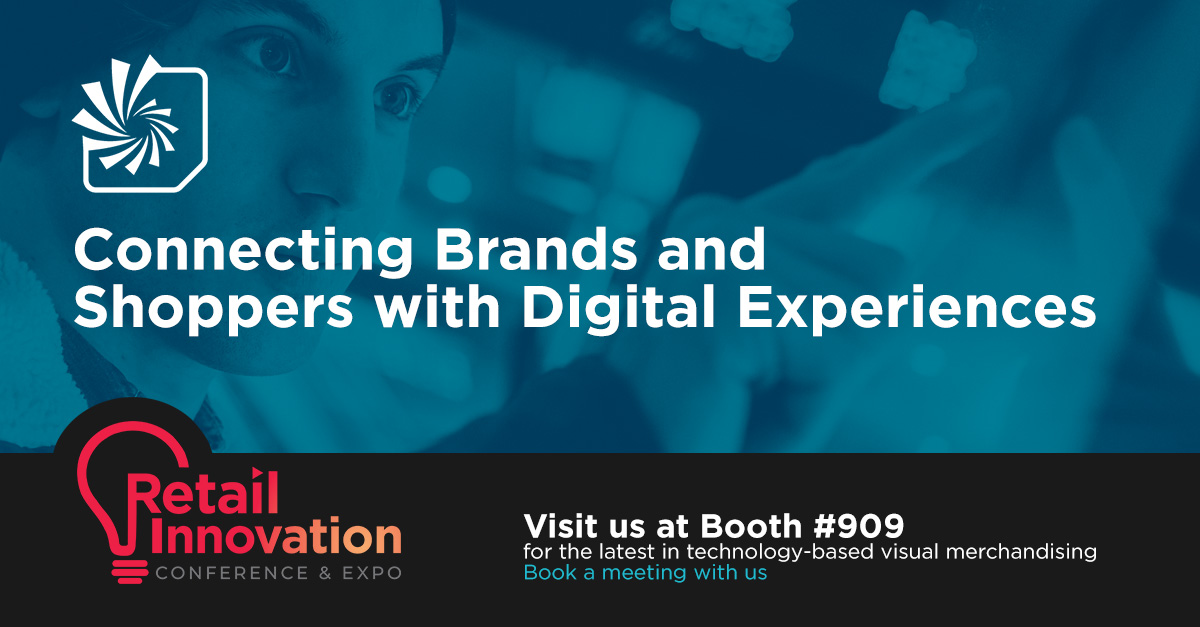Content is the Linchpin of Your Digital Shopper Marketing Success
Most customers today split their shopping time between browsing online and going to the store. With the two very different environments often creating a bumpy, disconnected customer experience, retailers are always looking for ways
to smooth out any gaps between the online and brick-and-mortar worlds.
One way to tie these experiences together is with an in-store digital shopper marketing program. A successful digital shopper marketing program includes digital signage, one where each screen serves a purpose . Once each screen has a purpose, those screens need content. That’s where a digital signage content strategy comes in.
Two types of digital signage content:
Passive content, where viewers cannot directly control or interact with the content, is ideal for relaying promotional offers and brand storytelling.
Interactive content, where the customer can participate in or influence what they’re seeing, also helps connect the online and in-store experiences. A common use of interactive content is to display a product that can't be fully used or demonstrated in the store, like a building a custom vehicle or designing custom furniture. You can’t have every iteration on display in the store, but customers can still browse and view options on an interactive panel.
Retailers also use interactive content to create personalized experiences. For example, you can have a screen that changes its content depending on how many people are viewing it. And technology is emerging that makes it possible to identify who is near the screen and create personalized content for that individual based on identified preferences.
What does good content look like?
Good content starts with a content strategy. What do you need to do to create a content strategy and what questions do you need to ask while doing it?
- Learn as much as you can about your audience. What motivates them? What keeps them coming back? What brought them to you in the first place?
- Define the objectives for your content. What do you want this content to achieve? Is it meant to tell your brand story? Is its purpose to move more product?
- Define the messages and calls to action that will enable you to achieve those objectives. What exactly are you saying? How are you saying it? What do you want the audience to do after seeing that content?
- Create the content. What’s the best way to convey this message? Should this content be static or have movement? Should it be interactive or passive?
- Measure the results. Have we clearly defined what success looks like? Have we defined success metrics?
Know your audience. Create objectives for each screen that are attainable considering when they will connect with shoppers along their journey. Define the messages that will motivate them to perform the desired action that will help you achieve your goals. Keep all content on brand. Consider the environment and if text-only versus audio experiences will deliver the best customer experience.
Don’t make this digital content mistake
Though digital screens may resemble a TV or billboard, it doesn’t mean retailers can just recycle TV commercials or online video. You’ve probably been in a store where screens displayed what’s obviously a TV ad, sometimes with the sound turned off. Not very effective, right? Or content that’s been repurposed from a landscape-oriented screen, now being shown on a portrait or square screen. The stretched out, distorted, and cut off image is telling the viewer: something is wrong here.
These examples show that the retailer is not following a defined strategy for their in-store digital signage. Instead, retailers should have unique content on their in-store screens that ladder back to measurable objectives.
For effective digital content, do this:
Effective digital content satisfies your objectives, grabs your customer’s attention, and generates awareness. Ideally, your content planning starts with determining the objective for each screen and what kind of content will meet that objective—before you even buy your hardware.
Screen placement within the store is also critical to content success. If your customers can’t see your screens, or they’re too far away to read the written content on them, they won’t do the job. The obvious way to check this is to stand where the customer will stand, look at your screens, and make sure they’re easy to see and legible.
- Include movement and motion in your content. Motion attracts attention and creates far more awareness than a static sign will. Any screen that is playing a static image is not fully leveraging the power of that screen.
- You can plan a digital content playlist that’s customized to your brand objective and conveys the message you want. If you’re promoting brand loyalty, show clips about your brand history and values. To boost sales, mix in promotional content. Use your playlist to create a content flow that’s pleasing for the viewer but also objective focused.
- Finally, keep your content fresh. Having outdated content projects a negative brand image. It’s easy to change and update your screens, and customers expect to see fresh content during each visit. By looking at how often your average buyer returns to the store, you can set a schedule to change out your content so they see new images and video every time they shop.
The key to a successful digital signage program is the content that’s shown on your screens. Old content and repurposed content isn’t going to cut it. By starting with strategy, you can make sure that your investment in your digital shopper marketing program is maximized and you’re creating a guest experience that will keep your customers coming back.
Want to learn more about creating unforgettable guest experiences? Download our whitepaper.
Share this
You May Also Like
These Related Stories

How Digital Signage Solutions Should Be Used in In-Store Marketing

Are All Digital Signage Solutions Providers the Same?


